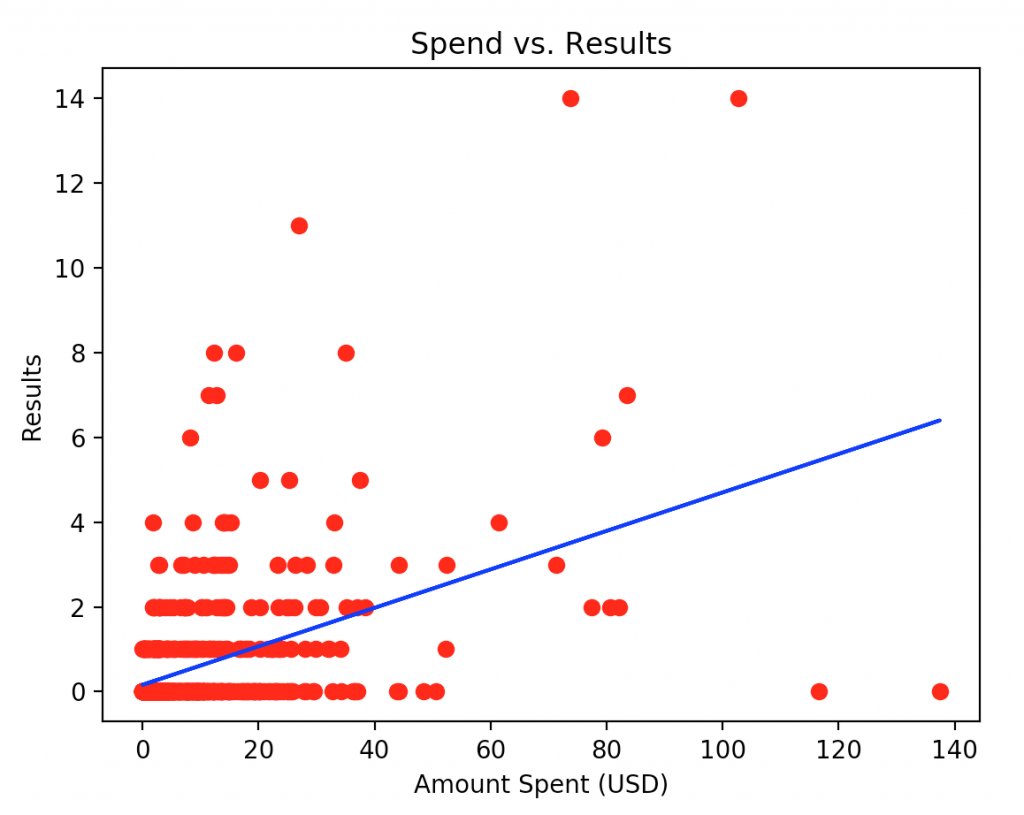Making -wild- predictions on the performance of your campaigns is easy. If you’ve been spending $10 per day, and getting 1 conversion, then $100 will get you 10 conversions. This is simple math.
It is simple because it is steady, linear, consistent. Far from what ads performance looks like in the real world.
Have you spend $100 in one day, and didn’t see any conversion until the end of that day? Or maybe one single click that led to a conversion… and nothing happened after?
This tells us two things: the first one is spend is not a good predictor of conversions. That you are spending more money, doesn’t mean you will get more conversions. At least, not as many as you would expect.
Second, there are variables we cannot control: maybe a big-budget advertiser came in, targeting the same audience than you, and that pushed our results down. Perhaps it was a holiday, and people weren’t really paying attention to your ads (or maybe that’s the reason why they were paying attention.)
Take a day by day breakdown, collect the spend and results of each day, and put them in a CSV named “spend_results.csv.” Then run this script. You will be lucky if you get an accuracy of more than 60%.
That means you can trust the numbers when the script tells you that if you spend $1000, you can get 45 results. But I wouldn’t trust completely in its output unless you have a consistent campaign, that has been giving you a constant amount of results for your money.
It wasn’t my case:

- From SaaS to AI Agents - 05/27/25
- The AI Automation Engineer - 05/13/25
- Hire One Developer to Press One Key - 05/06/25